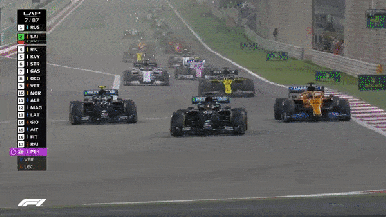As I have been getting back into the hobby, it's inevitable that I hear the occasional back-and-forth between magnet and non-magnet racers, I often hear standard lines, like: "non-magnet racing is more challenging" or "Non-magnet racing takes more skill" or "non-magnet racing is more realistic."
First of all, let me say that I appreciate both kinds of racing. People should do whatever they like. Most of my cars retain their magnets because that makes them better-suited for running on my style of home tracks and for my guests (who aren't that experienced). I also primarily run Le Mans-type cars and modern GT cars, and expect them to stick to the track and not "drift" through turns. Think about it. Do you commonly see the back ends of LMPs or F1 cars fishtailing through a turn? Probably not--because the two main factors at play--tire grip and aerodynamic downforce--keep them glued to the track. That is how they are designed, and they are driven according to those principles.
 |
| Don't see much fishtailing through the turns here... |
I was watching an excellent video about some of the more serious crashes in racing history and how safety has developed over time. At about the 5:30 mark, it provides an excellent explanation of how tire grip and aerodynamic downforce combine to keep race cars on the track, and how--when the downforce is suddenly lost--the results can be catastrophic, as they were in the case of Ayrton Senna, for example. To me, that seems to parallel similar results when a magnet car loses grip at speed. Time and time again I hear non-magnet proponents say: "the problem is, when a magnet car crashes, your car can get seriously damaged." YES. Just like in real racing.
 |
| Losing downforce (aerodynamic or magnet) usually has poor results. |
To me, the removal of the magnet from a slot car would essentially be the same as removing all the wings and ground effects from a real race car and telling the driver to just rely on their tire grip to stay on the track. Since there are no aerodynamic effects at 1:32 scale, the magnet provides the essential substitute. Not a perfect one, but not bad either. I know many would suggest that simply adding weight (lead) is somehow a more acceptable substitute, but this attitude seems like a tired remnant from the "old days" of wood track commercial racing, before magna-traction was even a thing. Magnets and lead are both artificial--why pretend that one is better or somehow more "legitimate" than the other?
 |
| How did we get to the point where it's bad to have a magnet, but perfectly OK to add lead to your slot car? |
I came across a forum comment from a magnet racer that said he thought it took more skill to keep a magnet car on the track at high speed--running that razor edge between maximum speed and sudden grip failure. That may be; the conception that magnet racers just plaster down the throttle and watch the car fly around the track is utter nonsense. Can high-speed crashes be bad? Absolutely--so magnet racers must learn how to drive fast without crashing. Conversely, it takes skill to learn how to run a non-magnet car quickly, to tune it for top performance and gain a feel for how it goes around a curve. That can offer its own fun challenges. Both take skill, but different types of skill. But to insist that one is somehow more realistic or takes more skill than the other just doesn't hold up under scrutiny.
That said, I can see where certain types of cars--like American muscle cars, rally cars or some vintage racers--can and should slide around the track a little as they as they come through sharp corners. For those types of cars, that looks realistic, and I would suggest that magnets probably aren't needed. In the end, it all depends how you enjoy the hobby; whether you're racing at home on a plastic track for fun, through proxy racing, or on a routed wood club track. You can take the approach that's required for each one and enjoy it without totally excluding the use of others, or claiming that the one you've chosen is the only "right" way.









No comments:
Post a Comment